Analysis
See the Highlights of Art Paris 2016
The curated section dedicated to Korean art dazzled VIPs.
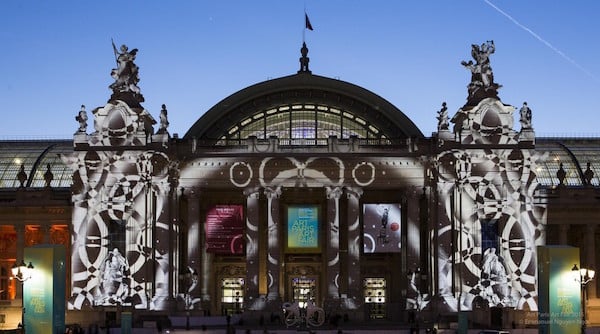
Photo: © Emmanuel Nguyen Ngoc.
The curated section dedicated to Korean art dazzled VIPs.

Emily Nathan

Torrential rain has never stopped the international press corps—and members from around the world braved a chilly Spring deluge yesterday for the vernissage of the 2016 edition of the art fair Art Paris.
Open to the public in Paris’ Grand Palais from March 31 through April 3, the fair’s 4th edition unites 143 galleries from 20 countries, all showing works from the postwar period through the present.
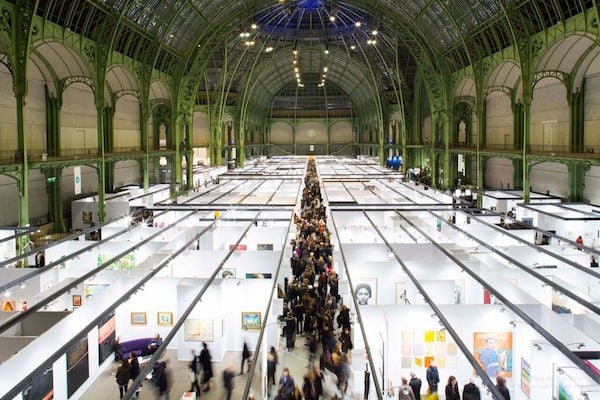
Art Paris Art Fair at the Grand Palais.
Photo: Courtesy Art Paris.
This year, it welcomed 58 newcomers, and included exhibitors from Azerbaijan, Colombia, and Iran for the first time, but it remained true to its founding concept of “cosmopolitan regionalism,” highlighting the zeitgeist of specific European regions, from Marseille to Munich.
As always, leading galleries brought major works by major artists—Galerie Daniel Templon is showing Jim Dine, Anthony Caro, and Jean-Michel Alberola—but the fair’s smaller exhibitors seem to go for the elegantly understated, with muted palettes, clean lines and organic textures.
At Galerie des Petits Carreaux, from Saint-Briac, diptychs and triptychs by the young French artist Pierre Galopin in numerous creamy shades of resin on canvas are on offer for €900-4,000.
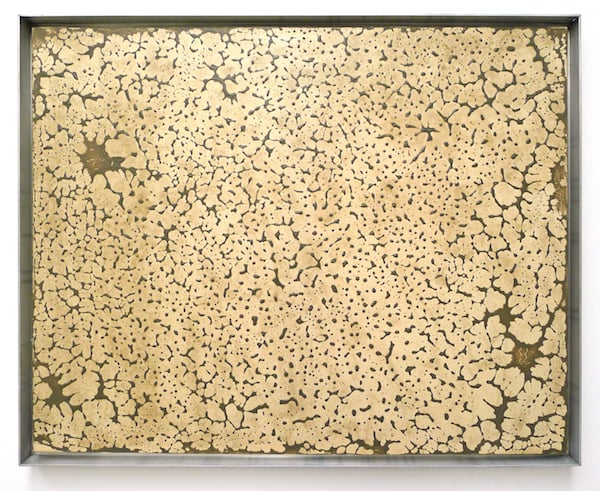
A work by Pierre Galopin at the booth of Galerie des Petits Carreaux.
Photo: Courtesy Galerie des Petits Carreaux.
Frankfurt’s Galerie Hoffman, meanwhile, is showcasing a stunning 1994 installation of framed works on paper by Dutch artist Herman de Vries (€185,000 for the ensemble). Each frame features an expanse of earthy color against a white ground—and every one is made by dragging a handful of dirt of mud across the paper.
“These are incredibly fragile,” said gallery director Adelheid Hoffman, who runs the space with her son. “We represent several artists who work directly with earth—I suppose you could say I like the look.”
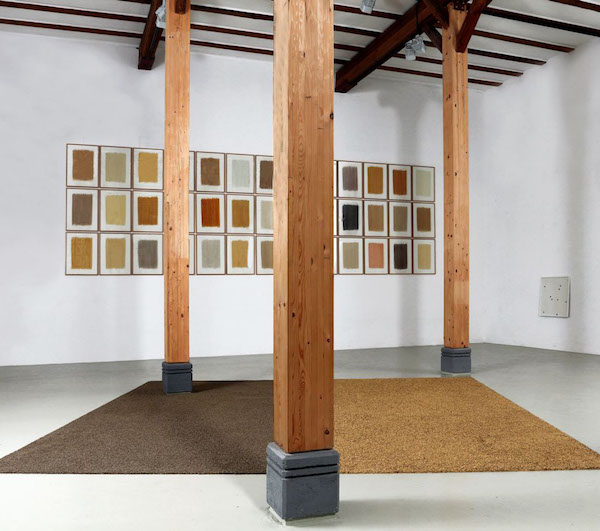
Galerie Hoffman, Herman de Vries, From Earth: From around Biel (2015).
Photo: Courtesy Galerie Hoffman.
Beyond its impressively global profile—48 percent of its exhibitors are not French—Art Paris is celebrated for its variety of special projects, exhibitions, and programming.
This year, the Promesse section features 12 young galleries showing new talents, with an emphasis on figurative work in painting and photography. Twenty Solo Shows are scattered throughout the space, featuring work by an abundant of female artists. And, in homage to developments in new media creation, a program of monumental video projections light up the façade of the historic building every night until midnight for the duration of the fair.
But the most prominent feature of Art Paris 2016 is its guest of honor: Korea. Organized by guest curator Sang-A Chun, programming director at Paris’ Korean Cultural Center, the highlight on Korean art takes over eight galleries from Korea and 26 Western galleries, with works by 80 artists from the “Land of Morning Calm.”
These are overwhelmingly abstract, and often hedge toward either bright, bold colors or muted palettes and organic materials. Most of the work on view is contemporary, but a number of historic presentations by some of Korea’s modernist masters contextualize that production by showing the country’s modern art roots.
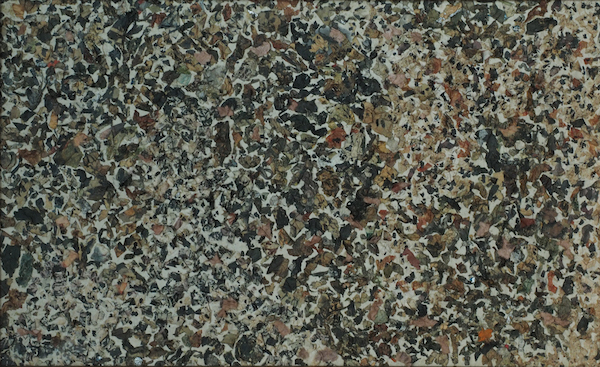
Ung No Lee, Composition (1960) at the booth of Thessa Harold Gallery.
Photo: Courtesy Thessa Harold Gallery.
At Thessa Harold Gallery, a dazzling presentation of works by Ung No Lee and his son Young Se Lee set the pace. Spare compositions made from colored paper affixed to canvas, Ung No’s works range in price from €8,000 to €38,000, while similarly showstopping compositions by Young Se are less pricey, from €1,800 to €8,000.
Nearby, a minimal, meditative 1978 masterwork by Lee Ufan—a grid of blue marks made repeatedly on a blank canvas until the pigment runs out—is on offer at 313 Gallery for €120,000.
Elsewhere, Korean artists are still active after some seven decades. Gana Gallery, from Seoul, features a few contemporary canvases by Myeong-ro Youn, one of the fathers of Dansaekhwa, the art of monochrome painting. “He was born in 1936, but he’s still going strong,” said gallery manager Bae Ju-Hyun. “He uses calligraphic lines and strokes but combines them with a Western medium, and doesn’t use much color. Western viewers often focus on the shape and gesture of his lines.”
In a similar vein, Lee Bae’s black-on-white acrylic and pigment compositions at Gallery RX, priced between €10,000 and €28,000, evoke abstracted Japanese letters.
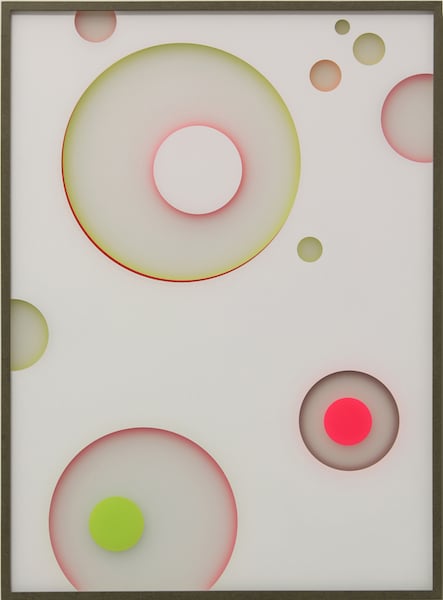
A work by Moon Pil Shim at the booth of Galerie LaHumière.
Photo: Courtesy Galerie LaHumière.
The other trend in Korean art seems to go entirely the other way, featuring bright, even neon colors, and highly artificial or industrial materials.
Perhaps no artist on view at the fair embodies this urge as well as Moon Pil Shim, who has small works on painted Plexiglass on offer at the Paris-based Galerie LaHumière, as well as larger pieces at Gallery Shilla from Daegu, in South Korea, for up to €50,000.
“I like minimalist artists, who use simple forms and complementary colors,” said Lee Kwang Ho, Shilla director. He pointed to a series of striped neon canvases by Park Doo Young, €5,000 each, that created an optical illusion of shifting color akin to Op Art. “There is a lot of color in Korean art—at least in my case.”
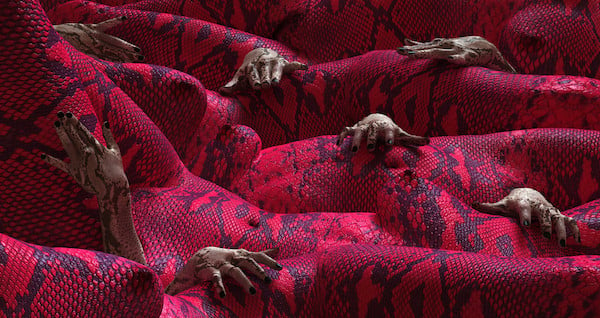
Facade projection of Kim Joon, Snake (2015).
Photo: Courtesy Park Ryu Sook Gallery, Seoul.
As night fell on the press preview, this historic façade of the Grand Palais became a canvas, as a rotating program of six video projections by artists from Azerbaijan, Korea, France, and Switzerland transformed its architecture in to an explosion of color and movement.
The dancing yellow and purple pinwheels of Hypnogogia, a 15-minute piece by Korean artist duo Col.l.age (Sho Jang & Min Kim), was inspired by the famous parable of Chinese philosopher Zhunag Zhou, The Butterfly’s Dream.
Meanwhile, Moon-Pil Shim used his signature neon colors to deconstruct the forms of abstract art through dancing lines and circles of shifting light. And Azerbaijan artist collective Hypnotica treated the architecture of Grand Palais as a living organism, creating the illusion that building was breathing, inhaling and exhaling, pulsating at a rhythm that felt almost human.
The art fair Art Paris 2016 takes place from March 31-April 3 at the Grand Palais, Paris.